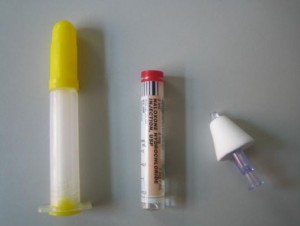I could bullet point plenty of statistics, but I don’t think I have to convince you: there is an opioid epidemic and it is getting worse.
We all have treated patients for opioid overdose in the ED. We also frequently identify substance abusers who are at high risk for future overdose. Aside from referring these patients to detox centers and encouraging enrollment in methadone maintenance programs, what else can we do to potentially save a life? Should we be considering prescribing narcan for the road? In the the fall of 2015, the FDA approved the first intranasal naloxone product and narcan nasal spray is now available in pharmacies (over the counter in 14 states).
The most common formulation administers 2mg–1mg per nostril. Data shows time to patient response is equivalent to that of IM administration. There are many advantages of intranasal naloxone, chief among them being the reduction of needle stick injury to rescue providers and the possibility of lay person delivery.
Concerned your prescription will encourage risky behavior? Data shows it won’t. Not willing to provide a patient with Narcan–how about calling in a prescription for a loved one living with a drug abuser unbeknownst to the patient?
I wrote my first prescription for intranasal narcan last week. I can’t say this will become my routine practice, but it is something we should consider.
References:
1) Dietze, Paul & Cantwell, Kate. Intranasal naloxone soon to become part of evolving clinical practice around opioid overdose prevention. Addiction. 14 Mar 2016. Volume 111, Issue 4, pages 584-586
2) Kerr, D., A. M. Kelly, et al. (2009). “Randomized controlled trial comparing the effectiveness and safety of intranasal and intramuscular naloxone for the treatment of suspected heroin overdose.” Addiction 104(12): 2067-74

